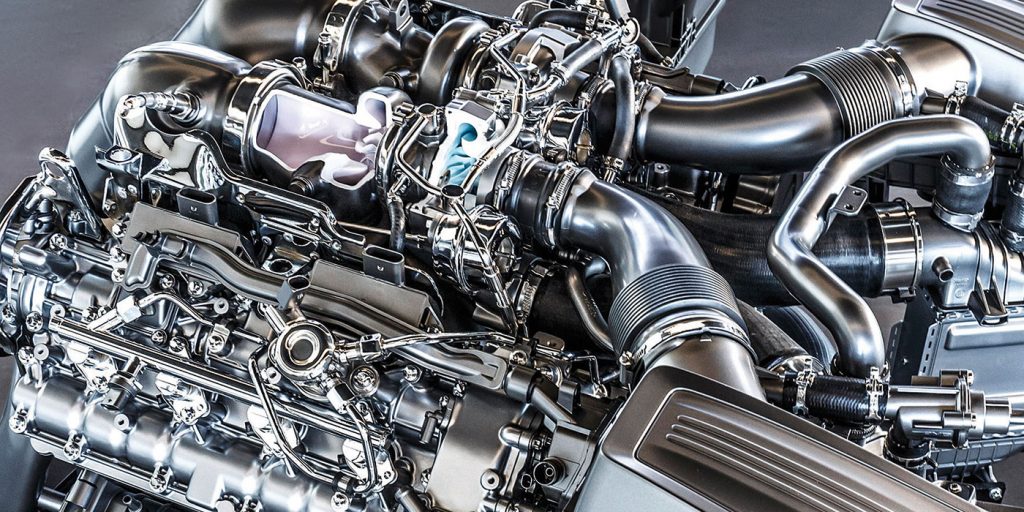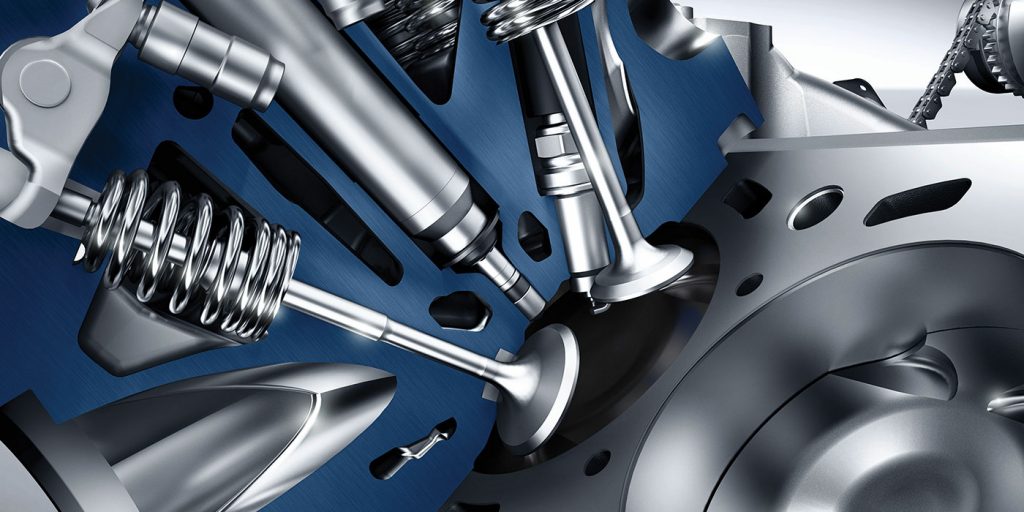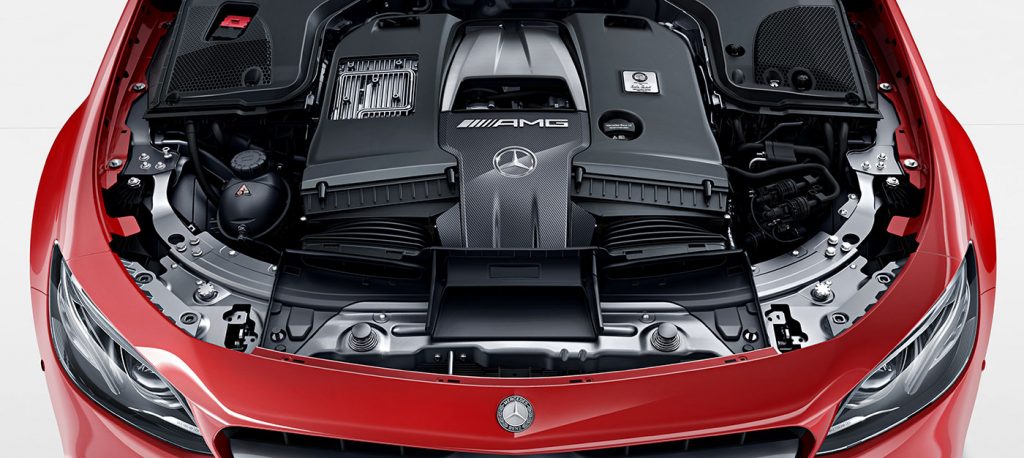The Mercedes-Benz M176, M177 or M178 engines can be found in almost every Mercedes Benz class since 2015, from C to S, as well as many SUVs. The V8 Biturbo engine is one of the first mass-produced engines with the turbochargers nestled in the V of the engine and intake manifolds where the exhaust manifolds should be. By placing the turbochargers in the V of the engine, the runners for the exhaust manifold are shorter; the less the exhaust gases cool when traveling from the exhaust ports to the turbochargers, the greater is the volume of gases to spin the exhaust turbine.
The engine found in most models has an ECO or stop/start mode that shuts down the engine at stoplights. Multiple electric pumps for the oil and coolant keep the engine and turbos cool. The V8 Biturbo is direct-injected and is part of the BlueDIRECT engine family. The engine uses third-generation piezo injectors.
On each bank is a high-pressure fuel pump powered by the exhaust camshaft. Each bank has a module called the fuel system control unit (FSCU) that drives the fuel injectors. The delivery of fuel is electronically controlled and fully variable for fuel pressure between 1,600 and 3,000 PSI.
The cylinder bore surfaces feature NANOSLIDE technology. This technology welds a mixture of metals to the walls, resulting in a surface that Mercedes claims to be twice as hard as a steel sleeve. The company started using NANOSLIDE in 2000 and, so far, it has been used in more than 200,000 engines since 2006. The piston rings are specially designed to work with the finish.
The engine for some models has a dry-sump oil system. This allows the engine to be installed lower in the engine bay on cars and on SUVs, giving more room for the 4MATIC system.
Cooling System
The Biturbo uses indirect air/water charge coolers (intercoolers) connected to a large radiator in the front for the turbochargers. The system is on a separate low-temperature coolant circuit from the engine. A module manages the flow of the coolant through the radiator and intercoolers with an electric pump. The goal of the engine management system is to achieve 77º F temperature drop over the ambient air temperature even during heavy engine loads.

The engine coolant is cooled using a cross-flow design. There is a three-phase thermostat to warm coolant faster. The water pump is driven by the timing chain rather than a belt – the chain requires less force than a belt and puts less stress on the water pump shaft seals and bearings.
An external engine oil cooler in the front apron of the Mercedes-AMG GT helps with heat management for the V8 engine. A two-stage, controlled oil pump circulates the engine oil, varying the flow rate depending on load and engine speed requirement.
Maintenance
The 4.0 Biturbo has the typical “A” and “B” services just like any Mercedes Benz vehicle. The oil and filter need to be changed every 10,000 miles. The dry sump holds 7.0- to 12-liters of oil depending on the vehicle.
Mercedes recommends changing the air filters every 30,000 miles.
The surprise in the maintenance schedule is that at 30,000 miles the automatic transmission fluid and filter needs to be replaced. The recommended replacement interval for the spark plugs is 50,000 miles.
TSBs
Technical service bulletin (TSB) LI54.21-P-062006 Version 10 was reissued on July 11, 2019. The bulletin concerns cylinder specific and random misfires. The bulletin discusses how to diagnose misfires and how to document the case for warranty reimbursement.

Technical service bulletin (TSB) LI54.21-P-062006 Version 10 was reissued on July 11, 2019. The bulletin concerns cylinder specific and random misfires. It is a must-read for technicians working on all Mercedes Benz vehicles.
The bulletin is a must-read for technicians working on all Mercedes Benz vehicles. The misfire detection and isolation methods described in the document apply to a lot of engines and diagnostic procedures and the bulletin has a great section on spark plug electrode inspection and how to read the misfire monitors.
The bulletin has three fixes to cure misfires on the Biturbo V8. The first fix is to check the coils to make sure they are all updated part number A 177 906 95 00. Second, Mercedes recommends updating the software in the VGS, PTCU, and FSCU control units. Third, they advise checking the grounds on the body for the ignition system. On some vehicles, the grounding stud was painted.
One of the more interesting TSBs is LI03.10-P-067389 issued November 11, 2017. This TSB only applies to AMG engines and discusses brass shavings in the filter. The shavings are not brass, but yellow paint applied to the connecting rod bolt caps by the AMG engine builders.














